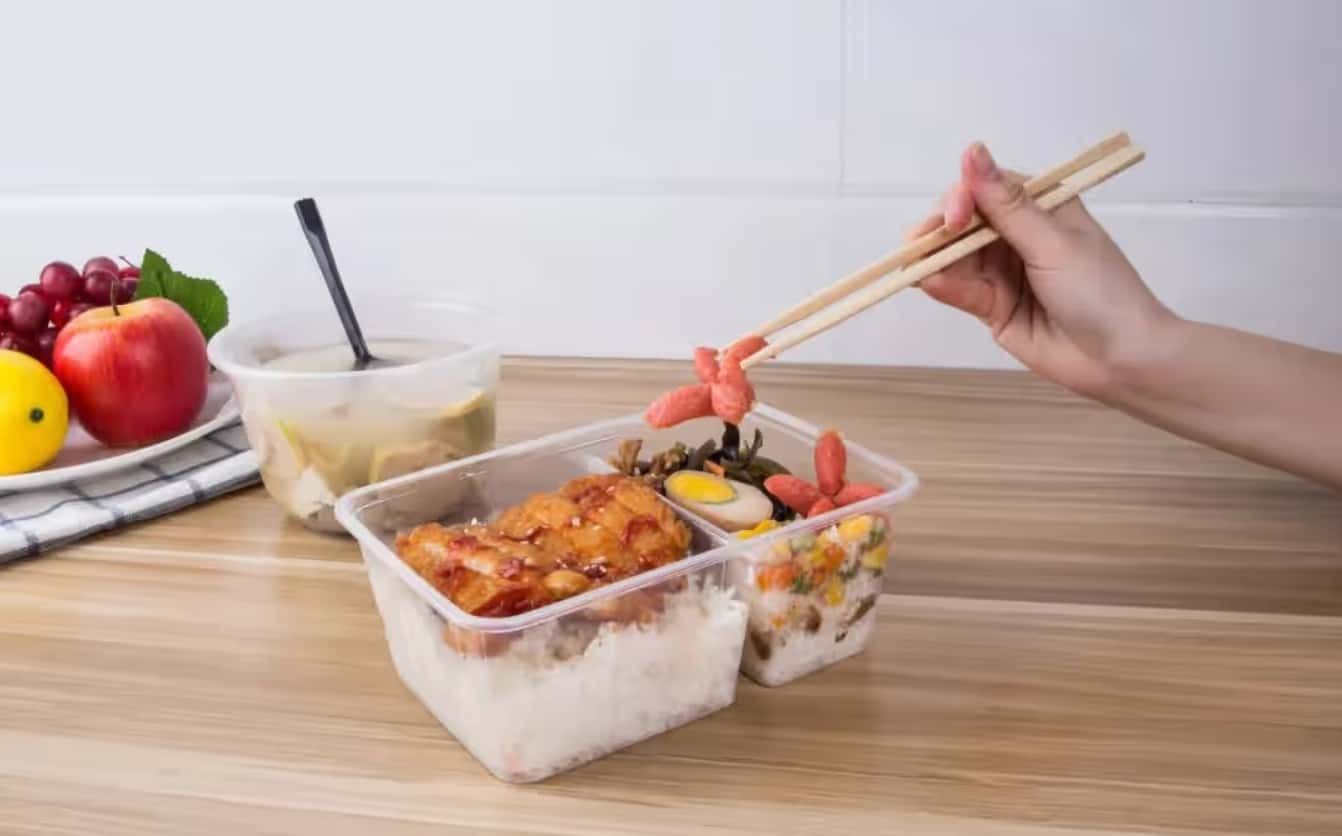Assessment of the Potential Health Impacts of Plastic Packaging in the Food Delivery Market
Introduction
In recent years, as the food delivery industry has boomed, plastic packaging has become a staple in taking meals to-go. However, concerns over chemical additives in these plastics, their migration under storage and high‑temperature conditions, and the potential health risks from microplastics have put the question “Do plastic takeout containers threaten human health?” squarely in the public eye. Drawing on the latest studies and authoritative reports, this article takes an in‑depth look at market size, common plastic types and migration mechanisms, microplastic exposure levels, health risks, regulatory standards, and viable alternatives.
Market Overview and Size
The global market for food delivery and meal‑kit services has grown steadily, driving a surge in demand for plastic containers. One market research report estimates that in 2023 the world’s plastic takeout container market reached about $169.47 billion, and is projected to climb to $231.42 billion by 2030, at a compound annual growth rate (CAGR) of roughly 5.5%. Another study put 2023’s market at about $35 billion, expecting it to hit $55 billion by 2032 (CAGR ~5.2%). Such massive scale means that consumers increasingly come into contact with plastics through daily takeout, making it crucial to evaluate potential health risks.
Types of Plastics and Their Uses
Common plastics in takeout packaging include:
- Polyethylene Terephthalate (PET). Widely used for drink bottles and clear food trays due to its strength; however, under high temperature or carbonated conditions it can leach trace substances.
- Polypropylene (PP). Favored for its heat resistance, often found in microwave‑safe containers; additive content can vary significantly with manufacturing processes.
- Polystyrene (PS). Regular GPPS or high‑impact HIPS form disposable cups and trays. Studies show that hot, fatty foods accelerate styrene monomer migration.
- High‑Density and Low‑Density Polyethylene (HDPE/LDPE). Found in films, bags, and flexible containers. Films often contain plasticizers that can migrate; LDPE containers may show phthalates at 1–500 ng/g, which increase with time and temperature.
In each material, stabilizers, plasticizers, colorants, and antistatic agents can migrate to food depending on heat, pH, fat content, and duration of contact—factors that warrant close attention.
Mechanisms of Chemical Migration
Potential migrants from plastic packaging include:
- Monomers and Residual Monomers. Styrene from PS and trace vinyl monomer. Research reports styrene levels in hot beverages (tea, milk, cocoa) between 0.61–8.65 µg/L, rising with temperature and time—and higher still in fatty drinks like hot cocoa milk.
- Plasticizers and Phthalates. PVC containers can contain up to 1–53% phthalates. Once ingested, they’ve been linked to diabetes, infertility, ADHD, and other chronic illnesses.
- Bisphenols (BPA, BPS, etc.). Used in polycarbonate plastics and inner coatings; human BPA levels correlate with cardiovascular disease, diabetes, and liver dysfunction.
- Metal Catalyst Residues. Antimony in PET can migrate at 0.003–0.4 µg/L in room‑temperature water and rise to 3.5 µg/L at 40 °C.
- Trace Organic Impurities. Formaldehyde, acetaldehyde, acetone, ethyl acetate, etc., ranging from single to tens of µg/L.
- Micro‑ and Nanoplastics. Wear, aging, repeated use, and interaction with acids, bases, or fats can release tiny plastic particles that enter the digestive tract.
Overall, migration increases with each extra hour of heating and each 10 °C rise in temperature—a “doubling” effect—so minimizing prolonged high‑temperature contact is key.
Microplastic Exposure and Intake
Multiple studies confirm growing dietary exposure to microplastics:
- Bottled Water. One study found microplastics in 93% of brands, averaging 325 particles/L, with some exceeding 800 particles/L—roughly double the levels in tap water.
- Cap‑Opening Simulation. Repeated opening and closing of bottles can shed 4–62 particles per action, accumulating over time.
- Human Tissue. Microplastics have been detected in atherosclerotic plaques and placental tissue, at concentrations of several µg/mg, and linked to inflammation and immune changes.
Since takeout containers often hold hot, fatty foods and are opened frequently, the risk of microplastic release and chemical migration may be even higher. Although precise quantification for takeout scenarios remains limited, conservative estimates suggest daily intake of dozens to hundreds of particles—enough to raise concerns about chronic inflammation and endocrine disruption. At present, no definitive “safe daily limit” for microplastic particles exists, but existing evidence clearly calls for precaution.
Health Risk Assessment
- Endocrine Disruption. Bisphenols and phthalates mimic or block hormones, affecting early puberty in girls, reproductive health in boys, and cognitive development in children. On World Environment Day, some physicians warned that plastic toxins could exacerbate type 2 diabetes, obesity, and heart disease.
- Inflammation and Immune Effects. Microplastics and small‑molecule migrants may trigger low‑grade chronic inflammation, upsetting immune balance and heightening chronic disease risk. Animal and in vitro studies show intestinal inflammation and possible systemic distribution via blood or lymph.
- Carcinogenic Potential. Styrene and BPA are classified as possible or known carcinogens. Though single exposures tend to fall below regulatory limits, repeated exposures—especially under high‑temperature, high‑fat conditions—pose concerns.
- Neurological Impact. Certain monomers and additives (e.g., styrene) may impair memory and reaction time; long‑term low‑dose effects warrant further study.
- Risks to Children and Fetuses. Microplastics in placental tissue indicate fetal exposure; endocrine disruptors during childhood threaten normal development.
While current safety thresholds mainly address short‑term or low‑dose exposures, everyday contact through food, drinks, takeout containers, and environmental pollutants means that cumulative risks cannot be ignored. Emphasis should be on prevention and exposure reduction—especially in high‑risk scenarios involving heat, fat, or acidic foods.
Regulatory Standards
European Union. Strict Specific Migration Limits (SMLs) for food‑contact plastics and phased bans on certain bisphenols, phthalates, and EPS foam tableware.
U.S. FDA. Approves polymers and additives, setting test methods and limits, but real‑world high‑temperature takeout use may outpace standardized tests, calling for industry‑led rigorous simulations.
China. National food‑safety standards specify migration limits for plastic food‑contact materials, with growing focus on hot, repeated‑use scenarios.
International Bodies. WHO and EFSA periodically review microplastic risks. Their current stance is that acute short‑term risks are low, but long‑term cumulative effects remain uncertain; they recommend continued research and precautionary measures.
Despite regulations, manufacturers of takeout packaging must factor in actual use conditions (microwaving, hot greasy food, repeated use) and proactively improve materials, tighten quality control, commission third‑party testing, and clearly label appropriate usage conditions to reduce consumer risk.
Viable Alternatives and Recommendations
Alternative Materials. Paper, bamboo, and PLA (polylactic acid) are popular biodegradable options. Paper containers need food‑grade linings—beware PE coatings that can migrate. Opt for coatings certified by reputable food‑safety bodies. PLA can soften under high heat, so use mainly for room‑temperature or cold foods and test high‑heat performance thoroughly. Bamboo and wood must be free of harmful chemical treatments and meet heat‑ and leak‑resistance standards.
Usage Strategies. Transfer hot takeout into glass or ceramic dishes at home to reheat or serve. Avoid reheating in single‑use plastics. If microwaving, use containers explicitly rated for that purpose or switch vessels, and limit heating time. Never reuse disposable plastics.
Consumer Education. Restaurants and delivery platforms should provide clear guidelines—e.g., “Please transfer food to your own container before reheating” or “For room‑temperature foods only.” Consumers can bring their own reusable containers.
Industry Innovation. Companies should develop simulation tests for room‑temperature, heated, and long‑storage scenarios to measure migration levels. New materials or coating technologies that minimize chemical migration and microplastic release are urgently needed.
Policy Advocacy. Governments and trade associations should establish standards and test methods tailored to takeout packaging, and consider subsidies or incentives to help small food businesses adopt safer, eco‑friendly packaging.
Quantitative Examples
At 80 °C for 30 minutes, migration of styrene or bisphenols can increase several‑fold; for instance, styrene in hot drinks may reach 0.6–8.6 µg/L.
With bottleneck microplastic levels averaging 325 particles/L, drinking 500 mL of a takeout beverage could mean ingesting about 160 particles, plus additional particles from container wear and heating.
The global takeout‑container market generates hundreds of millions of tons of waste annually; as some of this breaks down into microplastics, it creates a vicious environmental and health cycle.
Conclusion
Plastic packaging in the food delivery market offers convenience and cost savings, but its potential for chemical migration and microplastic release cannot be overlooked. Evidence suggests that frequent or prolonged exposure—especially under high‑temperature, high‑fat conditions—may lead to endocrine disruption, chronic inflammation, carcinogenic risk, and developmental harm in children and fetuses. Consumers, foodservice businesses, and delivery platforms must adopt preventive measures: optimize usage practices, embrace safer alternative materials, and bolster testing and regulatory efforts. Policymakers and industry bodies should develop standards and guidance specific to takeout scenarios. Only through coordinated action can we preserve the convenience of food delivery while minimizing its impact on human health.



